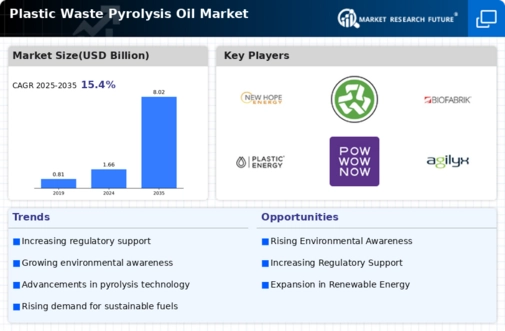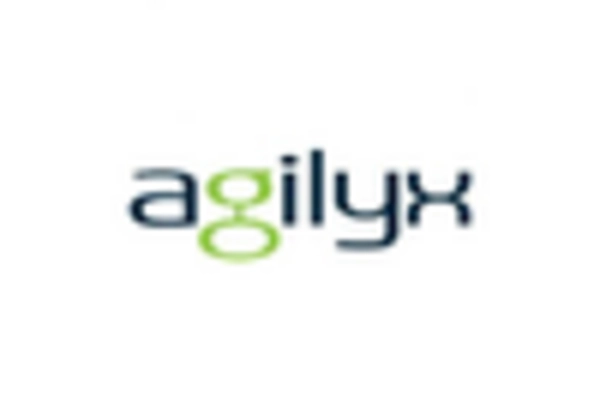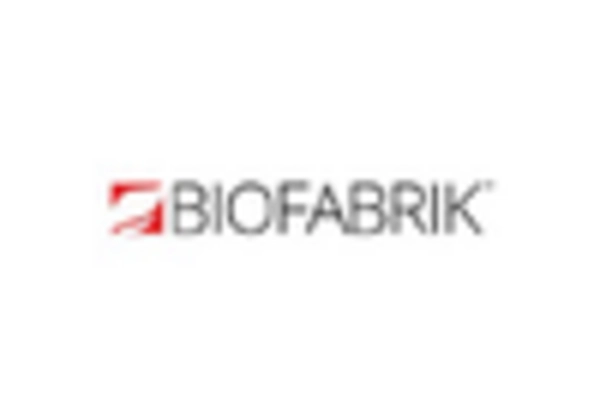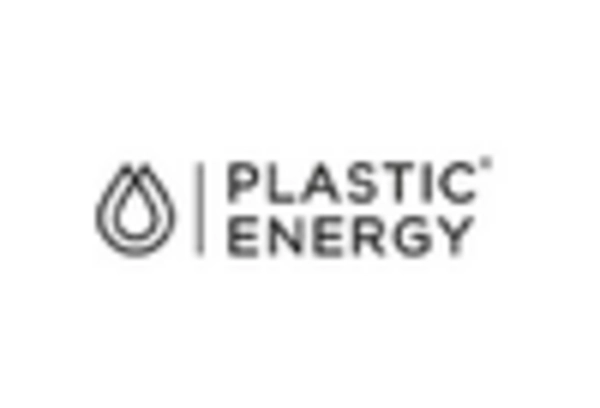The Plastic Waste Pyrolysis Oil Market is currently characterized by a dynamic competitive landscape, driven by increasing environmental regulations and a growing emphasis on sustainable waste management solutions. Key players are actively engaging in strategic initiatives to enhance their market positioning. For instance, Plastic Energy (GB) has focused on expanding its technological capabilities, particularly in the development of advanced pyrolysis processes that convert plastic waste into high-quality oil. Similarly, Agilyx (US) is leveraging its proprietary technology to establish partnerships with municipalities and waste management companies, thereby enhancing its operational footprint and market reach. These strategies collectively contribute to a competitive environment that is increasingly centered around innovation and sustainability.
In terms of business tactics, companies are localizing manufacturing and optimizing supply chains to improve efficiency and reduce costs. The market structure appears moderately fragmented, with several players vying for market share. However, the collective influence of major companies like Veolia (FR) and SUEZ (FR) is notable, as they possess extensive resources and established networks that can significantly impact market dynamics. Their strategies often involve vertical integration, which allows them to control more aspects of the supply chain, thereby enhancing their competitive edge.
In August 2025, Klean Industries (CA) announced a strategic partnership with a leading energy firm to co-develop a new facility aimed at increasing the capacity for converting plastic waste into pyrolysis oil. This collaboration is expected to bolster Klean Industries' production capabilities and enhance its market presence, reflecting a broader trend of partnerships aimed at scaling operations in the pyrolysis sector. The strategic importance of this move lies in its potential to accelerate the commercialization of pyrolysis technology, thereby addressing the urgent need for sustainable waste management solutions.
In September 2025, ReNew ELP (GB) unveiled plans to expand its operations into the Asian market, targeting regions with high plastic waste generation. This expansion is indicative of a strategic shift towards international growth, as ReNew ELP seeks to capitalize on emerging markets where demand for sustainable waste solutions is on the rise. The significance of this move is underscored by the potential for increased revenue streams and enhanced brand recognition in a rapidly evolving global market.
Moreover, in July 2025, Biofabrik (DE) launched a new digital platform designed to optimize the monitoring and management of pyrolysis operations. This initiative reflects a growing trend towards digitalization within the industry, as companies seek to leverage technology to improve operational efficiency and data analytics capabilities. The strategic importance of this digital transformation cannot be overstated, as it positions Biofabrik to respond more effectively to market demands and operational challenges.
As of October 2025, the competitive trends in the Plastic Waste Pyrolysis Oil Market are increasingly defined by digitalization, sustainability, and the integration of advanced technologies. Strategic alliances are playing a crucial role in shaping the current landscape, enabling companies to pool resources and expertise to drive innovation. Looking ahead, it is likely that competitive differentiation will evolve, with a shift from traditional price-based competition towards a focus on technological innovation, sustainability, and supply chain reliability. This evolution suggests that companies that prioritize these aspects will be better positioned to thrive in an increasingly competitive market.


















Leave a Comment